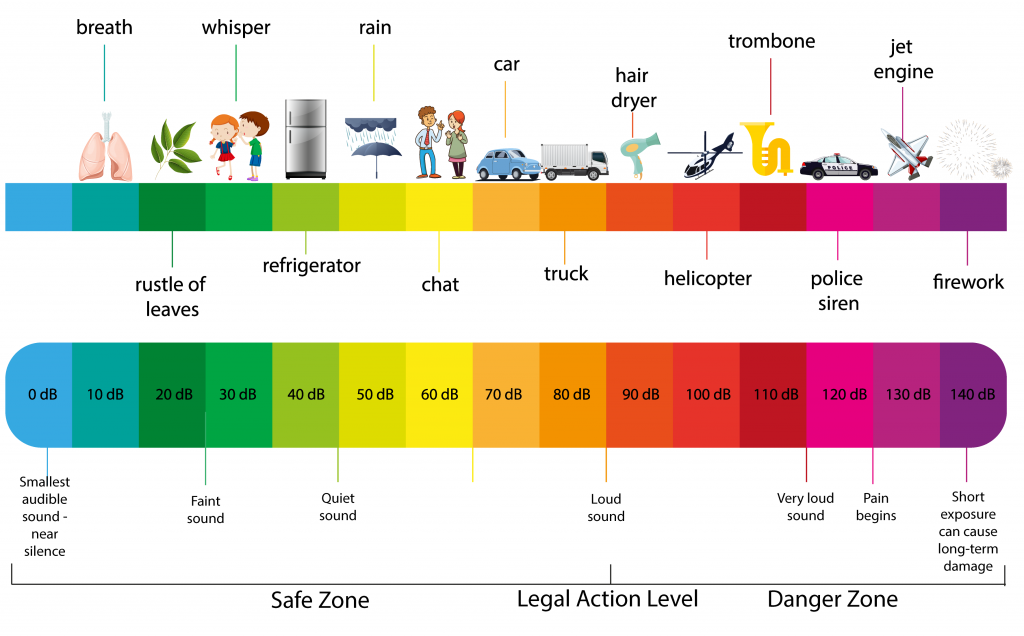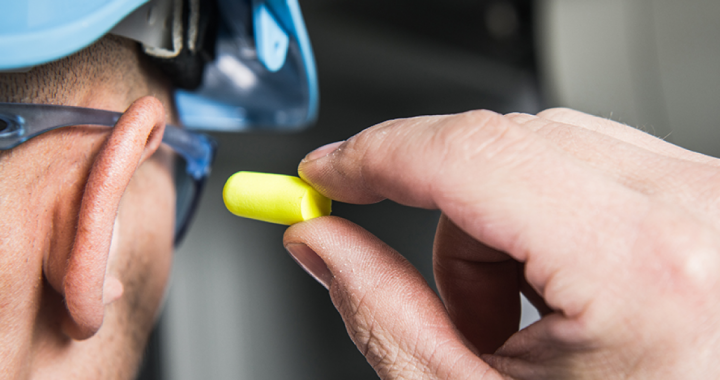-
Many of us have experienced temporary hearing loss (known as a temporary threshold shift) from very loud impact noises such as from firecrackers or shooting firearms, and from occasional loud exposures during concerts or sporting events. Our hearing typically recovers in a few days from these types of exposures.
But did you know that elevated and repeated occupational noise exposures (well below these short-term and occasional exposures) can, over many years, cause gradual but significant hearing loss?
 With elevated and repeated occupational noise exposure over a long period of time, we simply can’t hear nearly as well as we did early in life. We’ll start to notice that we can’t hear light rain falling on the roof, birds singing in early spring, leaves rustling on an autumn day, and many other sounds that are important to a great quality of life.
With elevated and repeated occupational noise exposure over a long period of time, we simply can’t hear nearly as well as we did early in life. We’ll start to notice that we can’t hear light rain falling on the roof, birds singing in early spring, leaves rustling on an autumn day, and many other sounds that are important to a great quality of life.That’s why the Occupational Safety and Health Administration (OSHA) published a permissible exposure limit (PEL) in 1971, and later published the Hearing Conservation Amendment in 1980 which included an Action Level that (if exceeded) required a Hearing Conservation Program designed to proactively manage exposures to elevated noise levels in the workplace.
Key provisions of OSHA’s noise standard include:
- A permissible exposure limit (PEL) of 90 decibels, A-scale (dBA) as an 8-hour time-weighted average (TWA). A TWA exposure is the average noise exposure as integrated over an 8-hour monitoring duration.
- An allowance of louder noise exposures for shorter periods of time for compliance with the PEL, as long as the TWA exposure does not exceed 90 dBA. For example, a 100% dose of noise (the maximum amount allowed) is equivalent to 8 hours of exposure at 90 dBA, 4 hours at 95 dBA, 2 hours at 100 dBA … all the way to ¼ hour at 115 dBA.
- A maximum of 140 dB peak sound pressure level for impulse or impact noise.
- An Action Level of 85 dBA that requires implementation of a hearing conservation program if an employee’s TWA exposure is at or above 85 dBA (or the employee has suffered a standard threshold shift).
- An adjustment of the 85 dBA Action Level for work shifts longer than 8-hours (83.4 dBA for a 10-hour shift, 82 dBA for a 12-hour shift and so on), because noise exposure damage is cumulative (i.e. a 12-hour exposure to a certain noise level is more harmful than the same noise level for 8 hours).
- An obligation to offer hearing protection if an employee’s TWA exposure is at or above the Action Level) and to require hearing protection if it exceeds the PEL (or the employee has suffered a standard threshold shift).
- A requirement to measure personal exposures with a noise dosimeter set at A-scale with a 5-dB exchange rate and slow response to capture sound pressure levels at 80 dBA and up (per OSHA Hearing Conservation Amendment) or 90 dBA and up (per OSHA’s original noise standard). Thus, noise dosimeters must have two channels to meet this criteria.
How can you verify regulatory compliance for noise exposure?
To evaluate worker noise exposures in comparison to OSHA’s PEL and Action Level, industrial hygiene professionals perform noise monitoring assessments by placing a noise dosimeter on the shoulder of a worker during a typical work shift (usually 8 hours) to capture sound pressure data. The noise dosimeter integrates the sound pressure levels over the shift and reports it as a single TWA sound pressure level. Those results are then compared to the OSHA Action Level and PEL for compliance purposes.
Let’s look at an example where a company wants to go from 8-hour shifts to 12-hour shifts (which requires an Action Level adjustment). Let’s say the company has noise data that shows the employees’ 8-hour TWA exposures in the production department are 82.5 dBA. Based on this data, the company has not implemented a hearing conservation program because the employees’ TWA noise exposures are below the 8-hour Action Level of 85 dBA. However, simply by going to 12-hour shifts, the TWA exposures of 82.5 dBA now exceed the 12-hour adjusted OSHA Action Level of 82 dBA. The company must now implement a hearing conservation program which includes annual audiograms, training, and hearing protection.
What about Non-Regulatory Standards?
It is worth mentioning that the American Conference of Governmental Industrial Hygienists (ACGIH) recommends a Threshold Limit Value (TLV) of 85 dBA using a 3 dB exchange rate instead of OSHA’s 5 dB exchange rate. Without getting too technical, a 3 dB exchange rate will always result in a higher result compared to a 5 dB exchange rate. Thus, the ACGIH TLV for noise is considerably more protective than the OSHA regulatory standards and should be considered as a best practice.
If you’re concerned about potential noise exposure, or confused by your noise exposure data, our OSHA regulatory experts can help.

Occupational Noise Exposure: Key Provisions of OSHA’s Noise Standard
Posted in Insights/Innovation.